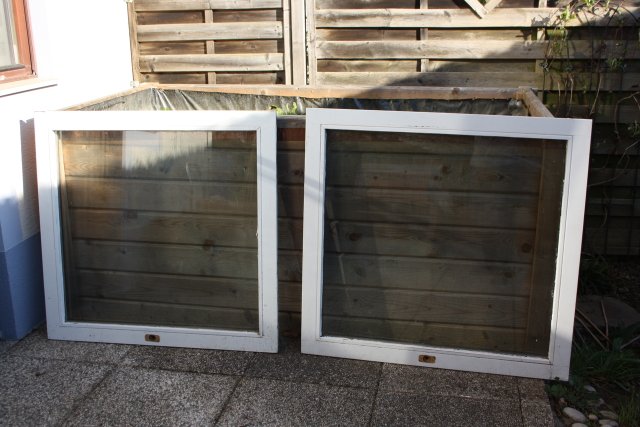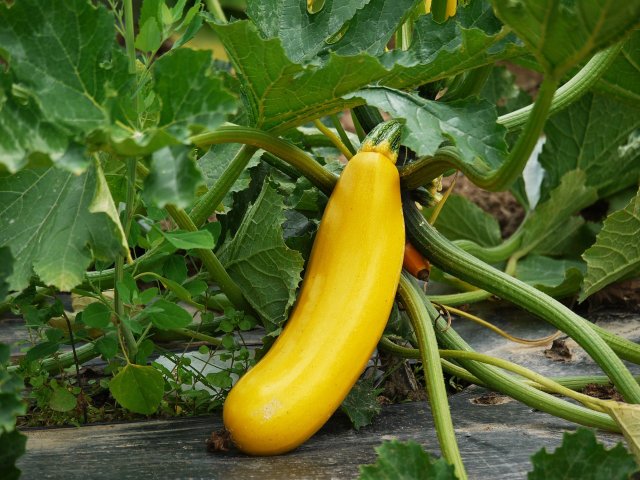
When you plant your raised bed, there are a few things to consider. We show you which plants are suitable for raised beds and which crop rotation you should pay attention to.

After you have built and filled your raised bed, you can plant it. There are a few things you should keep in mind to ensure a bountiful harvest.
A raised bed is significantly warmer and more nutritious than a bed on the ground. This is not only due to the greater distance to the soil, but above all to the rotting process inside the raised bed, which is caused by the different layers.
As a result, heat-loving plants with high nutrient requirements thrive particularly well. We show you what to look for when planting your raised bed.
Tip: Because of the warmth advantage, you can start growing your vegetables as early as the end of March, or in April at the latest. To protect the young plants from cold air temperatures, you can cover them with a thin fleece overnight. Alternatively, you can build your own cold frame, for example from old windows. The cover will keep your plants warm and protect them from pests.
Contents
Planting a raised bed: With these vegetables it works
Due to the high nutrient content, you should mainly plant high-yielding crops in the first year. This will prevent nitrate accumulation.
These eight plants belong to the high-yielders and are particularly suitable when you plant your raised bed for the first time:
- Peppers: they need a lot of heat and light. In addition, your raised bed should have a wind-protected location. Peppers are best planted on the north side of your vegetable bed so that their leaves don’t block the sun from other plants.
- Zucchini: Summer vegetables also benefit from the composting effect. Zucchini likes it warm, as well as protected from rain and wind. Since the leaves take up a lot of space, make sure to keep enough distance between vegetable plants.
- Cabbage: Winter vegetables need a lot of nutrients, so it’s important to wait at least three years before growing cabbage again. In addition, cabbages are particularly susceptible to pests. In addition to proper mixed cultivation with, for example, tomatoes, you can also cover cabbage with a fine net to protect it from pests. Alternatively, Brussels sprouts are also suitable for growing in raised beds.
- Pumpkin: Hokkaido pumpkin is particularly suitable. However, you should place the plants at the edge of your bed. This way, the pumpkin can grow out of the side of the bed and hardly takes up any space from the other plants. It’s best to attach an additional climbing aid, such as an old ladder.
- Tomatoes: Tomatoes are known to be very sensitive to rain, so choosing a variety is critical. It is best to choose wild tomatoes or bush tomatoes. They are significantly more robust. A north-facing location is also recommended for tomatoes, so as not to deprive the other plants in your bed of light.
- Eggplant: This annual vegetable plant needs a lot of nutrients, but is otherwise quite easy to care for. You should just provide it with a support pole so that it doesn’t bend over from the weight of its fruit. Alternatively, you can choose varieties with smaller fruits.
- Cucumbers: they benefit not only from the warmth of the raised bed, but also from the height. Plant cucumbers at the edge of your bed so the shoots can climb outward and are less susceptible to cucumber mold.
- Leeks: Leeks are also highly nutritious, but are otherwise quite frugal. It does not make great demands on the climate, nor on the space. You should definitely plant leeks deep enough in the raised bed for the stems to grow strong.
Planting a raised bed: Effective use of space
Due to the high nutrient content of the raised bed, you can plant it more densely than usual beds. Especially in spring, when the leaves of the remaining plants have not yet reached their full size, you can fill the gaps with other vegetables.
For this purpose, it is best to use vegetables that do not require much space and/or ripen quickly. Most of these plants belong to the category of medium or low growers. In the first year, it is important that the strong eaters predominate in your raised bed to guarantee a balanced nutrient content.
Sporadically you can fill the gaps with the following plants:
Kohlrabi: The early cabbage variety is particularly suitable as a gap filler. Depending on the weather, you can harvest kohlrabi after only two months.
Onion: With the help of bulbs, even beginners can grow onions. Onions require little care and are very frugal. You can also harvest them ahead of time as spring onions, should space prove to be too limited after all.
Carrots: This popular root vegetable needs well loosened soil and plenty of light. Sow the seeds in grooves about 3 centimeters deep, 20 centimeters apart. The carrot needs about 4 weeks to germinate. Between the carrots you can additionally plant radishes, they grow much faster.
Beet: The tubers need little space, but you should also consider the leaves. The beetroot vegetable is robust and is hardly attacked by pests.
Tip: You can also plant hanging strawberries or nasturtiums at the edge of your raised bed.
How to plant your raised bed after the first year
In the fall after harvesting, you can work the remaining plant parts into the soil. They return valuable nutrients to the soil. In addition, you can improve the raised bed with green manure. Suitable plants include:
- Lupine
- Yellow mustard
- Phacelia
- Persian clover
These plants return nutrients, especially nitrogen, to the depleted soil. If the soil in your raised bed has sunk, loosen the existing soil and mix it with fresh garden soil. To fertilize your raised bed, you can add compost or horn shavings.
Over the winter, you can cover your bed with leaves, which will provide additional nutrients to the soil.
The optimal planting for your raised bed

In order to enjoy your raised bed in the long term, you should follow the crop rotation.
Year 1: Plant mainly high-yielding crops in the raised bed, such as the vegetables we have presented to you. Occasionally you can also plant medium growers.
Year 2: After the vegetables from the first year have taken a lot of nutrients from the bed, you should mainly plant medium growers such as carrots, onions or fennel. You can also plant strong growers, but you should limit yourself to a maximum of three varieties.
Year 3: Now is the time for weak growers. Occasionally you can also plant medium growers, but you should avoid strong growers altogether. Weak growers include:
- Spinach
- Lettuce
- Cress
- Radish
Year 4: In this year you should only plant green manure plants, so that the soil can recover. In autumn you can enrich the soil with compost.
Year 5: After your raised bed has recovered in the fourth year, you can now start all over again.
Mixed culture in the raised bed against pests

Through sensible mixed cultivation, plants protect each other, so you can do without chemical pesticides. Pesticides have no place either in the garden or in our food.
These plant communities complement each other perfectly:
- Carrot and onion
- Zucchini and onion
- Eggplant and cabbage
- Garlic with strawberries or carrots
- Cabbage plants with tomatoes,
- peppers with tomatoes, cucumbers, cabbage or carrots
- Beet with onion, cabbage, zucchini or garlic
As with us humans, however, there are also bad neighbors among plants. You should avoid these plant combinations in your raised bed if possible:
- Squash and zucchini
- Cabbage next to other cabbage plants
- Garlic with onion and cabbage
- Peppers with eggplant and fennel
- Beet with spinach or chard
- Parsley next to leaf lettuce
Natural protection against pests and diseases

Fresh herbs are not only popular in the kitchen. They are also extremely useful in the garden and should not be missing in your raised bed. Especially because they act as a natural protection against pests and diseases:
- Chervil repels ants, slugs, aphids and mildew.
- Parsley next to strawberries keeps snails away.
- Basil next to cucumbers or zucchini helps fight powdery mildew.
- Compared to beds on the ground, raised beds are already very safe from slugs. But even if they take longer, snails will find their way to fresh vegetables. Of course, you can get rid of snails with a copper band around the raised bed.
In addition to pests, watering is often a problem in raised beds. Water quickly seeps through the inside of the raised bed and what is left is a dry bed. To save water, it proves useful to mulch the raised bed with green cuttings. The plant residues keep the soil moist and protect your vegetables from drying out.

